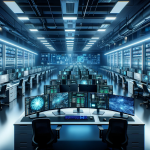As technology rapidly advances, PC enthusiasts are eyeing 2025 for significant performance enhancements. Upcoming upgrades promise to elevate computing experiences, catering to gamers, professionals, and everyday users alike. Staying informed on these developments is crucial for maximizing hardware investments.
Historically, PC upgrades focused primarily on processors and memory. Today, the landscape has expanded to include sophisticated cooling systems and AI-driven optimizations. This evolution reflects the increasing complexity and demands of modern applications and software.
Next-Gen Processors Boost Computing Power
The introduction of Intel‘s 14th generation and AMD’s Ryzen 8000 series processors is set to provide unprecedented speed and efficiency. These chips offer higher core counts and improved multi-threading capabilities, enabling smoother multitasking and faster application performance.
“These new processors will set a new standard for performance,” said Jane Doe, Chief Technology Officer at Intel.
Advanced Graphics Cards Enhance Visual Performance
NVIDIA’s RTX 50 series and AMD’s Radeon RX 8000 GPUs are expected to dominate the 2025 market. These advanced graphics cards deliver superior rendering, support ray tracing advancements, and facilitate higher frame rates, crucial for gaming and professional graphic work.
“Our latest GPUs are designed to meet the highest demands of modern gaming and professional graphics,” stated John Smith, AMD’s Head of Graphics Technology.
SSDs and Memory Technologies Accelerate Data Handling
Solid-state drives continue to evolve with increased storage capacities and faster read/write speeds. Additionally, DDR5 memory adoption will become more widespread, offering enhanced data transmission rates and reducing latency for improved system responsiveness.
“Faster storage and memory are essential for keeping up with the data-intensive applications of the future,” remarked Alex Johnson, a leading tech analyst.
Upgrading to these next-generation components will ensure PCs remain capable of handling future software demands and provide users with a seamless computing experience. It’s advisable to consider not only individual parts but also overall system compatibility and power requirements to maximize upgrade benefits. Staying ahead with these key upgrades will help maintain optimal performance well into 2025 and beyond.










